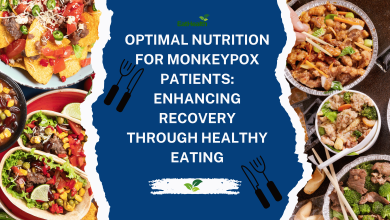Ancient Diets: Exploring Historical Nutrition Trends
Unlocking the Secrets of Ancestral Nutrition: What Ancient Diets Reveal About Our Past and Future
Exploring Ancient Diets: Unlocking Historical Nutrition Secrets
In our quest for nutritional wisdom and healthier lifestyles, we often overlook the most potent source of knowledge: our history. Ancient diets, the culinary practices of our ancestors, offer invaluable insights into how early civilizations utilized natural resources to nourish themselves. As we delve into the world of historical nutrition trends, we uncover patterns that could inform and improve our modern dietary choices. This journey through time not only connects us with our past but also guides us toward a sustainable future, making the study of ancient diets more relevant than ever.
The Cradle of Culinary Civilization
The foundations of culinary civilization were laid by the ancient cultures of Mesopotamia, Egypt, and the Indus Valley. These civilizations thrived on diets rich in grains, legumes, and vegetables, with meat playing a ceremonial or luxury role. In Mesopotamia, barley and wheat formed the staple diet, often turned into bread and beer, which were central to both nutrition and culture. The Egyptians, with their advanced agricultural techniques, cultivated a variety of fruits and vegetables, such as dates, figs, onions, and garlic, significantly influencing their health and longevity.
The Greco-Roman Gastronomy
The ancient Greeks and Romans introduced a level of sophistication to their diets that reflected their philosophical beliefs and social structures. The Mediterranean climate allowed for a diverse array of foods, including olives, grapes, and grains. The Greeks emphasized balance and moderation, consuming a predominantly plant-based diet complemented by fish and occasionally meat. Roman dining, on the other hand, became synonymous with opulence, but the common folk largely ate simple meals consisting of grains, legumes, and vegetables, seasoned with herbs and olive oil.
Feasts of the Far East
The ancient diets of China and Japan were profoundly influenced by philosophical and cultural beliefs, particularly Taoism and Buddhism. These diets were characterized by balance and harmony, focusing on seasonal and regional foods. Rice, soybeans, and wheat were staples in both cultures, accompanied by a variety of vegetables and seafood. The traditional Chinese philosophy of yin and yang was mirrored in their meals, aiming for nutritional and energetic balance, while the Japanese diet was shaped by the principle of “washoku,” which emphasizes variety and balance.
The New World’s Nourishment
The pre-Columbian civilizations of the Americas, including the Maya, Aztec, and Inca, developed diets rich in maize, beans, and squash, often referred to as the “Three Sisters.” These crops not only provided a balanced diet but also supported sustainable farming practices. The introduction of these foods to the European colonists dramatically transformed global agriculture and cuisine. Tomatoes, potatoes, and chocolate are just a few examples of New World foods that have become staples in diets worldwide.
The Middle Ages to the Renaissance: A Dietary Transition
The transition from the Middle Ages to the Renaissance in Europe marked significant changes in dietary habits. The medieval diet was largely dependent on grains, with meat and fish reserved for the upper classes. However, the Renaissance brought about a renewed interest in science and nature, which led to the diversification of diets. Exploration and trade introduced Europeans to new foods, spices, and cooking methods, laying the groundwork for modern Western cuisine.
Lessons from Our Ancestors
Studying ancient diets reveals a universal emphasis on whole, unprocessed foods, seasonal eating, and the importance of community in meal preparation and consumption. These diets were naturally rich in fiber, vitamins, and minerals, with lower levels of sugars and fats than many modern diets. The balance and variety observed in ancient eating patterns offer lessons in nutritional diversity and the benefits of a diet rooted in natural foods.
Modern Implications and Trends
The resurgence of interest in ancient diets, such as the Paleo and Mediterranean diets, underscores a growing recognition of their potential health benefits. These modern adaptations emphasize whole foods, lean proteins, and healthy fats, drawing inspiration from the ancestral eating patterns that sustained humans for millennia. As we face global health challenges, including rising rates of obesity and chronic diseases, the principles underlying ancient diets offer a blueprint for sustainable, healthful eating.
YouTube Channel for Health realted Educational Videos
Conclusion
The exploration of ancient diets offers more than a historical curiosity; it provides practical insights into achieving a balanced, nutritious diet. By studying the dietary trends of our ancestors, we can uncover timeless principles of health and sustainability. As we navigate the complexities of modern nutrition, the wisdom of ancient diets reminds us that sometimes, looking back is the best way forward.





